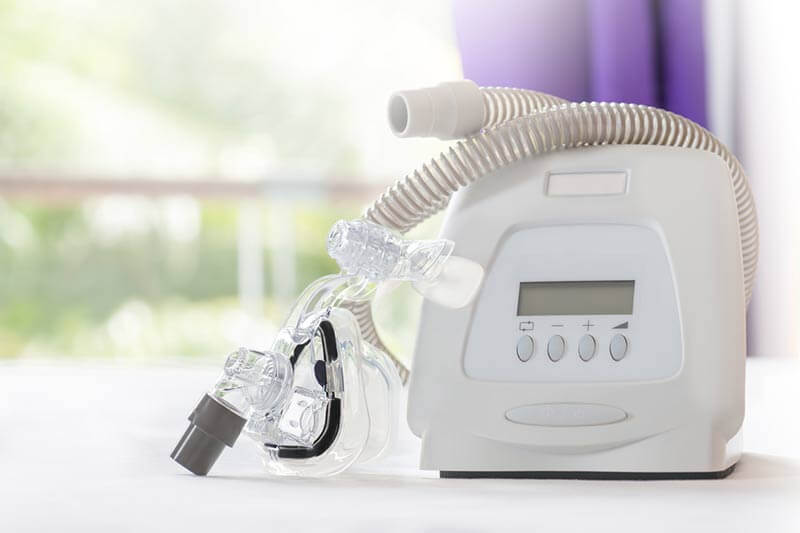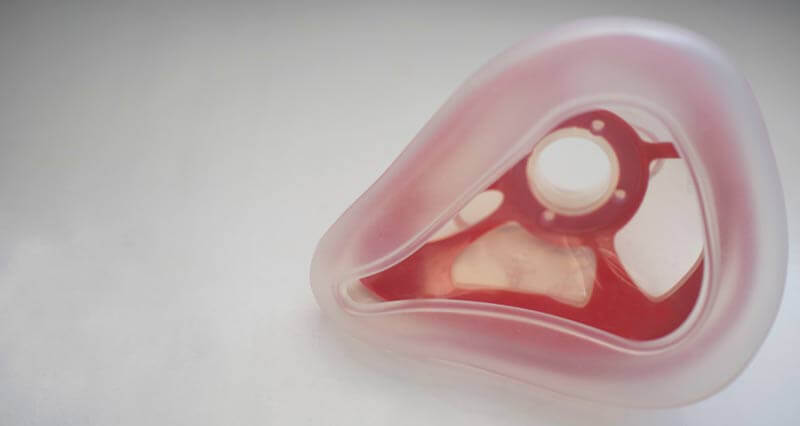Sleep disorders constitute a major health problem in the US, with around 22 million Americans suffering from obstructive sleep apnea (OSA) alone. 80% of all those cases include moderate to severe undiagnosed sleep apnea. Sleep apnea is most commonly treated through continuous positive airway pressure applied via a mask – CPAP mask.
CPAP masks are designed to be worn throughout the night and pump a steady flow of pressured air into the patient’s airway(s). This therapy has proven its effectiveness, but up to 83% of patients do not comply with their prescribed CPAP therapy. In order to combat this dangerous trend, we compiled a list of the currently available types of CPAP masks and included their known pros and cons. This should help you find the best CPAP mask for your particular needs, avoid discomfort, and have a good night’s sleep while allowing the therapy to run its course.

What Type Of CPAP Mask Is Best For Me?
Before we delve into the specifics of each type of CPAP mask, it is important to note that almost all CPAP masks should help you with your sleep apnea problem – at least to a degree. Studies have shown that 6+ hours of CPAP therapy per night brings your daytime sleepiness to a normal level and improves your memory and overall functioning. People usually don’t adhere to their prescribed therapies due to discomfort or the fact that the mask simply falls off during the night.
Since we recognize the importance of comfort during your resting period, here are our recommendations and guidelines on who should use which CPAP mask and why.
Nasal CPAP Masks
Nasal CPAP masks are designed to cover your nose from the upper lip area to the bridge of your nose. They deliver an indirect airflow to your nasal airway, which works exceptionally well for patients in need of a higher-pressure setting. They come in many sizes, so you shouldn’t have any problems finding one that fits the overall shape and size of your nasal area.
Nasal CPAP masks are usually recommended to patients who:
- Move around a lot in their sleep
- Need higher-pressure settings on their machines
- Want a wider selection of mask options
- Prefer a more natural airflow
The advantages of nasal CPAP masks include:
- Natural and indirect airflow
- They handle high-pressure settings better than nasal pillows
- Various styles that’ll cater to any type of facial structure and features
- Excellent for restless sleepers
The downsides of nasal CPAP masks include
- Not ideal for mouth breeders (unless paired with a chinstrap)
- Possible irritation on the bridge of the nose and forehead
- Suboptimal pressure delivery in patients with sinus blockages
- They cannot help patients who have difficulties with nose breathing due to enlarged turbinates, narrowed/collapsed nasal valves, deviated septums, and similar medical conditions
Nasal Pillows
Nasal pillows are a lightweight and compact option designed for minimal contact which your face. Since they pump pressurized air directly into your nostrils, high-pressure settings may prove to be uncomfortable. This is why they work best with prescriptions that include low-to-moderate air pressure.
Nasal pillows are usually recommended to patients who:
- Feel claustrophobic when wearing larger CPAP masks
- Toss and turn a lot in their sleep
- Have a lot of facial hair
- Breathe exclusively through their nose
The advantages of nasal pillows include:
- They provide patients with a more open field of vision than traditional nasal masks or full-face CPAP masks, allowing you to read or watch TV before you go to sleep
- Since they do not cover the bridge of your nose, you can also wear your glasses with the mask on
- They are very lightweight and have minimal contact which your face
- They reduce air leakage since the air is directed into your nasal passages
- If you have a lush beard or mustache, nasal pillows will still work just fine
The downsides of nasal pillows include:
- Not ideal for patients who require higher air pressure
- They can cause nasal dryness or nosebleeds in some patients
- Mouths breathers will have to combine them with a chinstrap
Full-Face CPAP Masks
Unlike nasal pillows and nasal masks, which seal exclusively on the nose, full-face CPAP masks will cover both your nose and mouth. In other words, they are designed to cover a larger area of your face in order to create a full CPAP seal over both airways.
Full-face CPAP masks are usually recommended to patients who:
- Breathe primarily through their mouth
- Need a high-pressure setting
- Sleep on their back
- Have a history of allergies or other medical conditions that make it difficult to breathe through the nose
The advantages of full-face CPAP masks include:
- Excellent for patients who breathe exclusively through the mouth
- Effective even if a patient suffers from allergies, frequent congestions or nasal obstructions
- They touch only the outside of your face
- Higher CPAP pressure
The downsides of full-face CPAP masks include:
- Higher chance of air leakage since they cover a larger surface
- Can cause irritation and dry eyes if the air leaks from the top of the mask
- Not ideal for patients who sleep on their side or stomach due to the likelihood of being displaced
- Full-face CPAP masks make it harder to read, watch TV or wear glasses
Additional Suggestions
Choosing the best CPAP mask for your personal needs hinges on three factors: size, fit, and comfort. If your mask doesn’t meet your breathing requirements, doesn’t fit properly, and isn’t comfortable, it most likely won’t comply with your CPAP therapy. Therefore, you should go over all the available masks and be ready to switch to a different mask later on if you’re not satisfied with your current choice.
The wrong interface will inevitably lead to non-compliance with your CPAP therapy, which simply means you won’t be able to achieve any measurable results. When it comes to comfort, you have a lot of cushion options at your disposal, including gel, foam, silicone or cloth, so don’t be afraid to experiment in order to find the most suitable configuration for you.
Work with your sleep physician and technologist on this problem. Make inquiries, ask for recommendations, and always tell them if you’re experiencing issues with your mask or other equipment. Remember, they are here to help you solve your problem and your cooperation will greatly accelerate the entire process.
Finally, it’s very important to stay positive and avoid feeling bad about your current situation. Just focus on the health benefits of your therapy that include having better health, being more alert, and living a better life overall.
